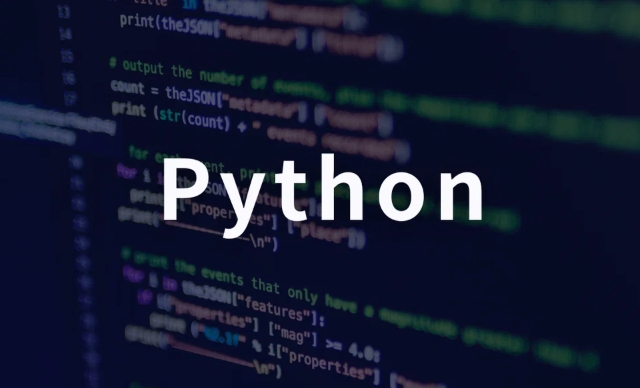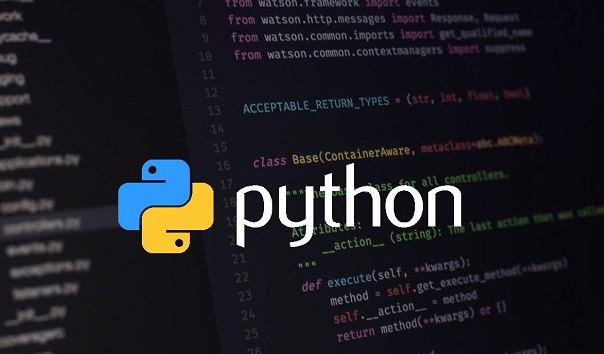Exploring the Usage of Python Lambda Functions
A lambda function in Python is a small, anonymous function best used for short, one-off operations where defining a full function with def would be unnecessary. It is defined using the lambda keyword, takes any number of arguments but only one expression, which is automatically returned. 1. Lambda functions are ideal for use with higher-order functions like map(), filter(), and sorted() where a simple function is needed inline. 2. They are not suited for complex logic, multiple lines, or cases where readability might suffer. 3. Avoid assigning lambdas to variables when possible, and prefer them only when the operation is straightforward and used once. 4. For more complex behavior or better readability, it's better to use a named function defined with def.

Lambda functions in Python are handy little tools when you need a quick, throwaway function — no name, no big deal. They’re especially useful for short operations where writing a full def function would feel like overkill. But to really make the most of them, it helps to understand not just how they work, but when and why to use them.

What Exactly Is a Lambda Function?
A lambda function is a small, anonymous function defined with the lambda keyword instead of def. It can take any number of arguments but only has one expression. That result is automatically returned — no return statement needed.

For example:
square = lambda x: x ** 2 print(square(5)) # Output: 25
This is equivalent to:

def square(x):
return x ** 2The main difference? The lambda version is concise and doesn’t require a formal function definition. It’s great for situations where you need a simple function once and then discard it.
Common Use Cases (Where Lambdas Shine)
Lambdas really come in handy when working with functions that expect other functions as arguments — like map(), filter(), or sorting operations.
Here are a few typical examples:
Sorting lists of tuples by a specific element
data = [(1, 'apple'), (3, 'banana'), (2, 'cherry')] sorted_data = sorted(data, key=lambda x: x[1])
Applying simple transformations with
map()numbers = [1, 2, 3] squared = list(map(lambda x: x ** 2, numbers))
Filtering with conditions using
filter()evens = list(filter(lambda x: x % 2 == 0, range(10)))
These cases are perfect for lambdas because the logic is straightforward and used in one place only.
When Not to Use Them
While lambdas are neat, they have limits. If your function starts getting complicated — say, needing multiple lines, conditionals, or side effects — a regular def function is better.
Also, readability matters. Compare these two:
# Hard to read
result = list(map(lambda x: x.upper() if len(x) > 3 else x.lower(), words))
# Easier to follow
def transform_word(word):
if len(word) > 3:
return word.upper()
else:
return word.lower()
result = list(map(transform_word, words))If the lambda gets too dense, it's probably time to switch back to a named function.
Tips for Using Lambdas Effectively
- Keep them short and focused — ideally one operation.
- Use them inside higher-order functions like
sorted(),map(),filter(). - Don't assign them to variables unless necessary; sometimes inline usage is clearer.
- Avoid complex logic or nested conditionals.
They're not meant to replace regular functions entirely, just to offer a more compact alternative when appropriate.
So, basically, lambda functions are a nice shortcut — but like any shortcut, they work best when used wisely.
The above is the detailed content of Exploring the Usage of Python Lambda Functions. For more information, please follow other related articles on the PHP Chinese website!

Hot AI Tools

Undress AI Tool
Undress images for free

Undresser.AI Undress
AI-powered app for creating realistic nude photos

AI Clothes Remover
Online AI tool for removing clothes from photos.

Clothoff.io
AI clothes remover

Video Face Swap
Swap faces in any video effortlessly with our completely free AI face swap tool!

Hot Article

Hot Tools

Notepad++7.3.1
Easy-to-use and free code editor

SublimeText3 Chinese version
Chinese version, very easy to use

Zend Studio 13.0.1
Powerful PHP integrated development environment

Dreamweaver CS6
Visual web development tools

SublimeText3 Mac version
God-level code editing software (SublimeText3)
 How to handle API authentication in Python
Jul 13, 2025 am 02:22 AM
How to handle API authentication in Python
Jul 13, 2025 am 02:22 AM
The key to dealing with API authentication is to understand and use the authentication method correctly. 1. APIKey is the simplest authentication method, usually placed in the request header or URL parameters; 2. BasicAuth uses username and password for Base64 encoding transmission, which is suitable for internal systems; 3. OAuth2 needs to obtain the token first through client_id and client_secret, and then bring the BearerToken in the request header; 4. In order to deal with the token expiration, the token management class can be encapsulated and automatically refreshed the token; in short, selecting the appropriate method according to the document and safely storing the key information is the key.
 Explain Python assertions.
Jul 07, 2025 am 12:14 AM
Explain Python assertions.
Jul 07, 2025 am 12:14 AM
Assert is an assertion tool used in Python for debugging, and throws an AssertionError when the condition is not met. Its syntax is assert condition plus optional error information, which is suitable for internal logic verification such as parameter checking, status confirmation, etc., but cannot be used for security or user input checking, and should be used in conjunction with clear prompt information. It is only available for auxiliary debugging in the development stage rather than substituting exception handling.
 What are Python type hints?
Jul 07, 2025 am 02:55 AM
What are Python type hints?
Jul 07, 2025 am 02:55 AM
TypehintsinPythonsolvetheproblemofambiguityandpotentialbugsindynamicallytypedcodebyallowingdeveloperstospecifyexpectedtypes.Theyenhancereadability,enableearlybugdetection,andimprovetoolingsupport.Typehintsareaddedusingacolon(:)forvariablesandparamete
 How to iterate over two lists at once Python
Jul 09, 2025 am 01:13 AM
How to iterate over two lists at once Python
Jul 09, 2025 am 01:13 AM
A common method to traverse two lists simultaneously in Python is to use the zip() function, which will pair multiple lists in order and be the shortest; if the list length is inconsistent, you can use itertools.zip_longest() to be the longest and fill in the missing values; combined with enumerate(), you can get the index at the same time. 1.zip() is concise and practical, suitable for paired data iteration; 2.zip_longest() can fill in the default value when dealing with inconsistent lengths; 3.enumerate(zip()) can obtain indexes during traversal, meeting the needs of a variety of complex scenarios.
 What are python iterators?
Jul 08, 2025 am 02:56 AM
What are python iterators?
Jul 08, 2025 am 02:56 AM
InPython,iteratorsareobjectsthatallowloopingthroughcollectionsbyimplementing__iter__()and__next__().1)Iteratorsworkviatheiteratorprotocol,using__iter__()toreturntheiteratorand__next__()toretrievethenextitemuntilStopIterationisraised.2)Aniterable(like
 Python FastAPI tutorial
Jul 12, 2025 am 02:42 AM
Python FastAPI tutorial
Jul 12, 2025 am 02:42 AM
To create modern and efficient APIs using Python, FastAPI is recommended; it is based on standard Python type prompts and can automatically generate documents, with excellent performance. After installing FastAPI and ASGI server uvicorn, you can write interface code. By defining routes, writing processing functions, and returning data, APIs can be quickly built. FastAPI supports a variety of HTTP methods and provides automatically generated SwaggerUI and ReDoc documentation systems. URL parameters can be captured through path definition, while query parameters can be implemented by setting default values for function parameters. The rational use of Pydantic models can help improve development efficiency and accuracy.
 How to test an API with Python
Jul 12, 2025 am 02:47 AM
How to test an API with Python
Jul 12, 2025 am 02:47 AM
To test the API, you need to use Python's Requests library. The steps are to install the library, send requests, verify responses, set timeouts and retry. First, install the library through pipinstallrequests; then use requests.get() or requests.post() and other methods to send GET or POST requests; then check response.status_code and response.json() to ensure that the return result is in compliance with expectations; finally, add timeout parameters to set the timeout time, and combine the retrying library to achieve automatic retry to enhance stability.
 Python variable scope in functions
Jul 12, 2025 am 02:49 AM
Python variable scope in functions
Jul 12, 2025 am 02:49 AM
In Python, variables defined inside a function are local variables and are only valid within the function; externally defined are global variables that can be read anywhere. 1. Local variables are destroyed as the function is executed; 2. The function can access global variables but cannot be modified directly, so the global keyword is required; 3. If you want to modify outer function variables in nested functions, you need to use the nonlocal keyword; 4. Variables with the same name do not affect each other in different scopes; 5. Global must be declared when modifying global variables, otherwise UnboundLocalError error will be raised. Understanding these rules helps avoid bugs and write more reliable functions.







